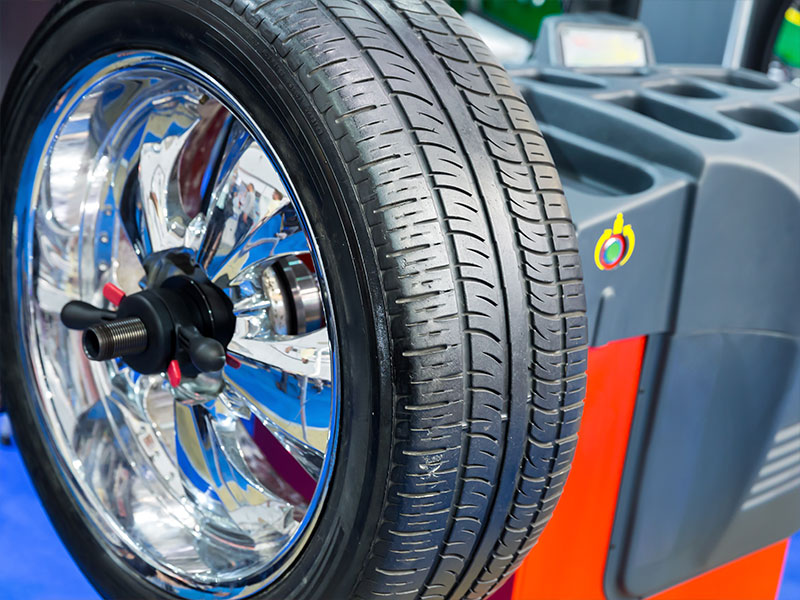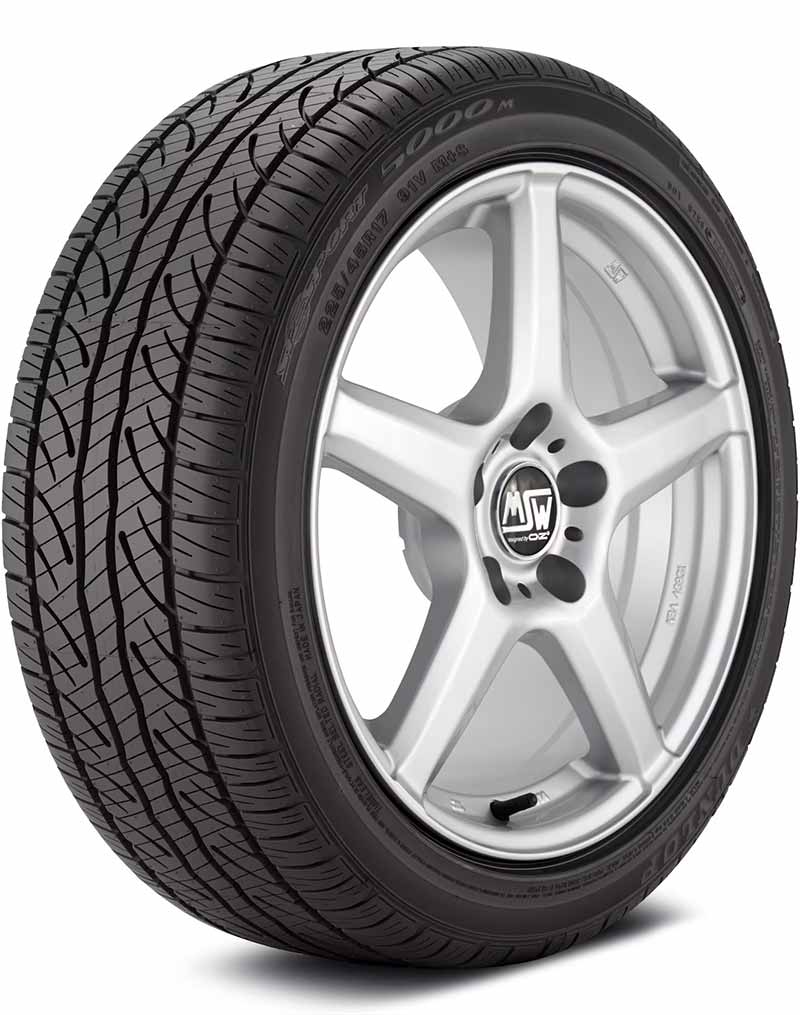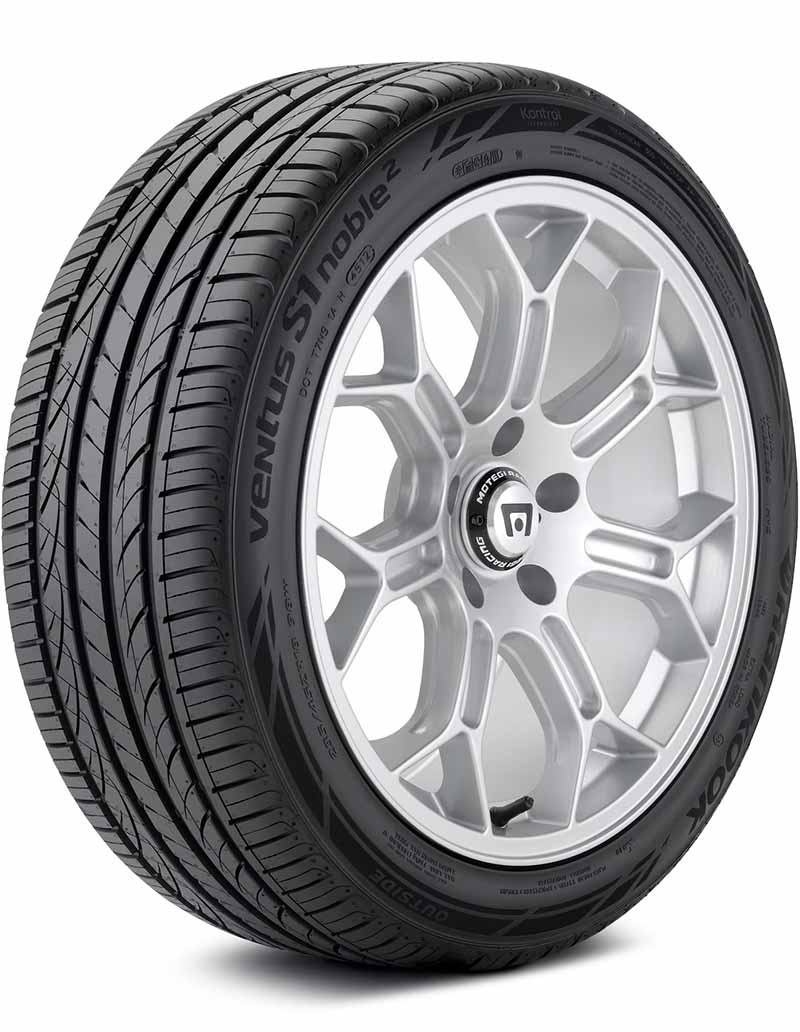Car and truck tires are a surprisingly advanced combination of rubber and steel. Despite this, tire manufacturing isn’t perfect. Because of this imperfection, it’s important to balance your tires as part of your regular tire maintenance routine.
Each tire will be ever so slightly imperfect. One point on the tire will be slightly heavier or lighter. This extremely small imbalance will cause vibration as the tire spins faster and faster.
These vibrations can be felt through the suspension and even cause the steering wheel to vibrate.
What Is Tire Balancing
Tire balancing is the process of adding weight to various points around a tire and wheel assembly to ensure even weight distribution around the wheel and tire.
The purpose of tire balancing is to reduce vibrations, promote even tread wear, and ensure the tire is in proper contact with the road surface, even at high speeds.
What Does Balancing A Tire Do?
Balancing tire weight evenly around the circumference of a wheel and tire assembly ensures that tire is free of vibrations. Tire imbalance can cause small vibrations at lower speeds which can be magnified as your vehicle accelerates faster and faster.
Tire balancing prevents uneven tire wear, eliminates vibrations felt through the vehicle and steering wheel, and ensures that the tire maintains proper contact with the pavement. This improves ride comfort, safety, and increases the usable life of the tire.
STEERING WHEEL VIBRATION
What Causes Unbalanced Tires?
Tires and wheels aren’t perfect when manufactured and require small weights to be added to lighter points around the tire and wheel assembly to ensure the wheels rotate smoothly.
Also, as tires wear, the balance of a tire will change as the tire wears down. As tires are used they can get out of balance again and require rebalancing.
Is Tire Balancing Necessary?
Yes, tire balancing is very important and considered necessary. Out of balance tires can be dangerous at higher speeds. They will also wear out much more quickly which can be far more expensive than the small cost of balancing a set of 4 tires.
Even if you don’t feel vibration in your steering wheel or notice any problems, an unbalanced tire is not going to perform as well or last as long as properly mounted and balanced wheel and tire assembly.
How Do I Know If My Tires Need Balancing?
Unbalanced Tires Symptoms
The most common signs that your tires may need to be balanced are:
- Uneven tire wear
- Steering wheel vibration
- Vibration felt through the seat or elsewhere in the cabin
- Car shake or shimmy at highway speeds, especially above 60 mph
- Unbalanced tire noise – Pulsing noise that speeds up or slows down as the vehicle speeds up or slows down
- Poor fuel economy
None of these are proof that your tires are out of balance since there can be more than one cause of these symptoms. But if you are experiencing these effects, tire imbalance should be one of the sources you consider for the problem.
UNEVEN TIRE WEAR
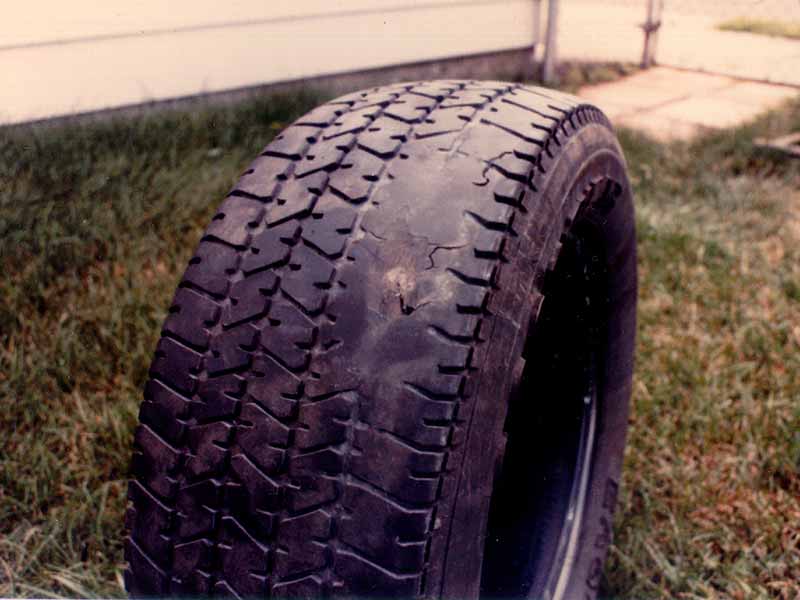
How To Tell Which Tire Is Out Of Balance
It can be very difficult to determine which specific tire is out of balance. Front tires out of balance will usually cause steering wheel vibration and can often be felt more prominently sitting in the front seats versus the rear seats.
Rear tires out of balance can not cause steering wheel vibration and will be felt more prominently while sitting in the rear of the vehicle.
Inspect each tire for uneven wear. If one tire in particular has unusually poor wear it may be a sign it is out of balance.
Is It Safe To Drive With Unbalanced Tires?
Typically, unbalanced tires are not usually so bad that they become unsafe. If the imbalance is particularly bad, they certainly can be dangerous. I have witnessed more than one vehicle on the road with a tire that was bouncing up and down to to an extreme imbalance with the wheel and tire assembly.
Despite minor imbalances not being considered unsafe in and of themselves, they can quickly create an unsafe situation since they lead to uneven tread wear. Tires with inconsistent tread wear will struggle with traction and can create unpredictable handling characteristics.
How Long Can You Drive On Unbalanced Tires?
Essentially everyone on the road is driving with slightly unbalanced tires. It’s impossible to perfectly balance wheels and tires. If your tires have not been balanced at all you may find that you don’t notice a problem, even at higher speeds, if you’re lucky.
No matter the situation, you shouldn’t drive on tires that are not balanced any longer than necessary.
Tire Balancing Vs Alignment
Tire balancing and wheel alignment often get confused. The reason for this is that when there is a problem with either of these, they both have similar symptoms.
Both tire balance and alignment issues can cause:
- Uneven tire wear
- Tire noise
- Vibrations
- Shimmies and shakes
- Poor fuel economy
The difference between tire balance and wheel alignment is in the name of each service. Tire balancing we’ve explained. Wheel alignment has to do generally with ensuring that each tire is pointed inline with the car or truck. Properly aligned wheels ensure the tire tread is contacting the road evenly and in a manner that maximizes grip.
There are many adjustments to the suspension geometry that need to be considered to ensure your vehicle tracks straight down the road and keeps the tire tread properly in contact with the pavement. Some alignment terminology you may hear might be camber, caster, toe.
- Camber is related to the vertical angle of the wheel and tire assembly when looking from the front or rear of the vehicle
- Caster is the angle between the upper and lower ball joints in the front suspension
- Toe is whether the front of the tires are both pointed slightly inward, perfectly straight with the vehicle, or slightly outward
I’ve seen many tires and wheels that are very difficult to balance perfectly.
TireGrades Expert Tip
I recommend not being overly sensitive to slight vibrations at high speeds unless you want to spend a lot of time at your local tire shop.
How Are Tires Balanced?
Tires are typically balanced with a machine that helps automate the process of determining which points around the circumference of the wheel and tire assembly are slightly lighter or heavier.
Once the lighter locations are identified, the machine will instruct the technician on how much weight needs to be applied to bring the assembly into balance.
There are 2 popular types of wheel weights that are used to balance wheel and tire assemblies:
- Clip-on wheel weights
- Adhesive wheel weights
Clip-on wheel weights clip on to the outside edge of the wheel and can easily be seen. Adhesive wheel weights can be stuck to various surfaces of the wheel but are commonly stuck to the back of a wheel spoke or the rim barrel. Clip-on wheel weights are not used as much these days since they are unsightly and adhesive wheel weights can easily be hidden.
CLIP-ON BALANCING WEIGHT
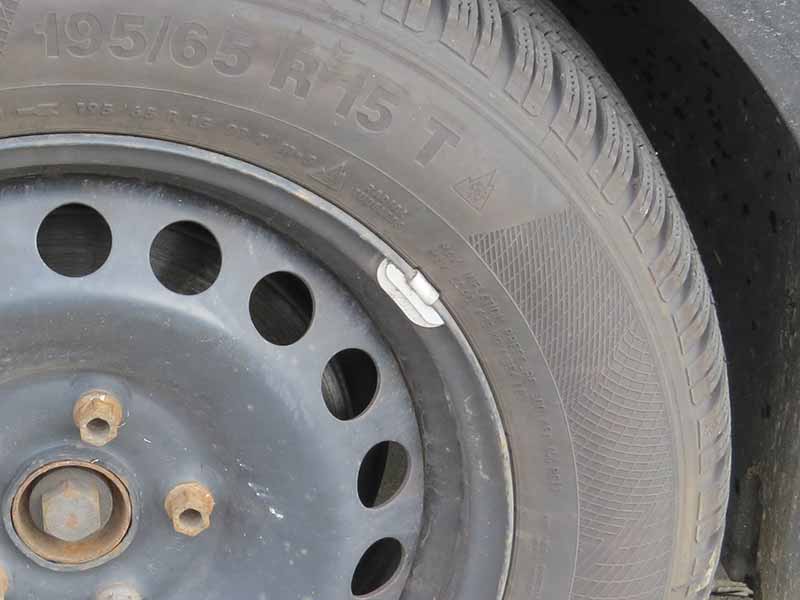
What Are The Two Types Of Tire Balancing?
There are 2 ways that tire and wheel assemblies need to be balanced.
Static Balancing Vs Dynamic Balancing
We’ve previously discussed the basic concept of balancing a tire around the circumference. This is known as static tire balancing. But we haven’t discussed ensuring that the face of the wheel assembly is just as balanced as the back of the wheel assembly. This is known as dynamic tire balancing.
Static tire balancing involves placing weights along the centerline (or only one plane) of the wheel to ensure it is balanced.
Dynamic balancing involves applying wheel weights to both the back side and front side of the wheel to ensure that it is balanced across the entire depth of the rim barrel.
Road Force Vs Standard Tire Balancers
Road force balancing is done with a tire balancing machine that is designed to balance the wheel assembly more closely to how it will be used in the real world – with weight pressing down on the wheel and tire causing the tire to deform slightly.
Cars and trucks are quite heavy and of course the tire is going to flex slightly in the sidewall at the bottom. Road force balancers recreate this while spinning the assembly to more accurately read imbalances under real-world conditions.
Standard tire balancers simply spin freely with nothing touching the tire. This is more than adequate for most people.
Where road force balancers come into play is with low profile tires. Low profile tires require a more accurate method of balancing to eliminate imbalances and ensure a smooth ride.
Road force balancers are worth the extra cost that may be involved if you have a sports car with particularly short sidewall tires. Otherwise, stick with a standard tire balancer unless there is no cost difference.
STANDARD TIRE BALANCER

Frequently Asked Questions
WHY IS MY CAR SHAKING AT HIGH SPEEDS?
There are many reasons your car or truck may be shaking at high speeds. One of the most common is a tire imbalance. Other potential common causes are uneven tire wear, improper alignment, or a suspension problem.
DO UNBALANCED TIRES AFFECT GAS MILEAGE?
Yes. Unbalanced tires will reduce fuel efficiency. Any situation where tires are not operating properly increases drag which in turn decreases efficiency.
DO I NEED TO BALANCE ALL 4 TIRES?
It’s important to balance all 4 tires to ensure that the tread wears evenly and they are able to perform properly. You may not feel vibration through the steering wheel if a rear tire is not properly balanced but vibration is only one downside of unbalanced tires.
WHAT HAPPENS IF YOU DON’T BALANCE TIRES?
Not balancing your tires usually results in steering wheel vibration, vehicle shimmy, uneven tire wear, and poor handling. The amount of each of these side effects will vary depending on how severe the imbalance is. No matter the amount, not balancing your tires will cause accelerated tire wear which is a costly mistake.
WHAT IS THE BEST WAY TO BALANCE TIRES?
A road force balancer is the most accurate machine for balancing a tire and wheel assembly. Road force balancing isn’t necessary for most tires but is a good choice for low profile tires that are more sensitive to imbalances.
HOW OFTEN SHOULD YOU BALANCE YOUR TIRES?
Tire balance will shift as they wear down. It’s a good idea to consider rebalancing your tires when they are rotated. Tires should be rebalanced around 10,000 to 12,000 miles. This often coincides with ever other tire rotation.
Resources
Below are some links you may find helpful when learning about tires
